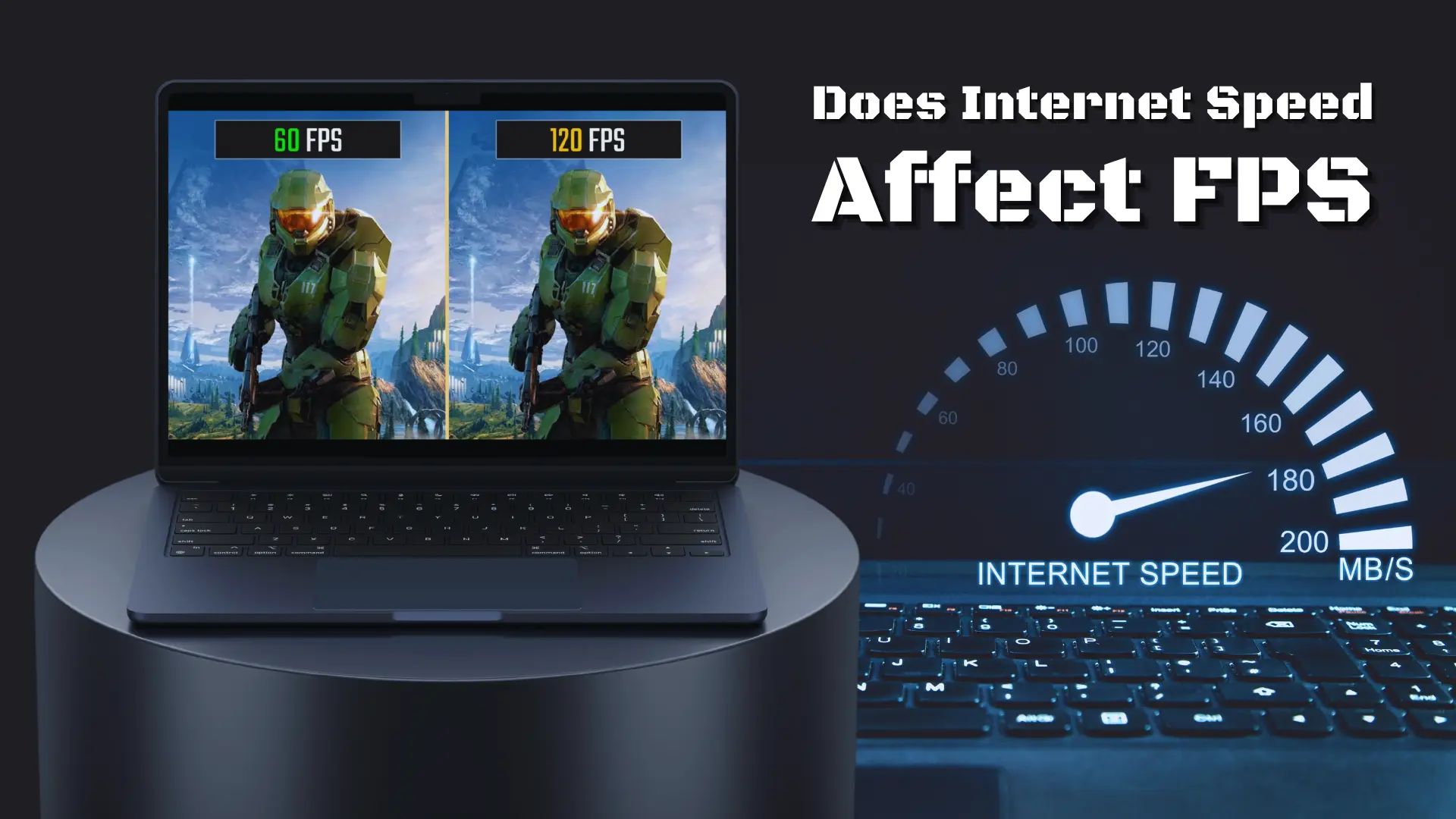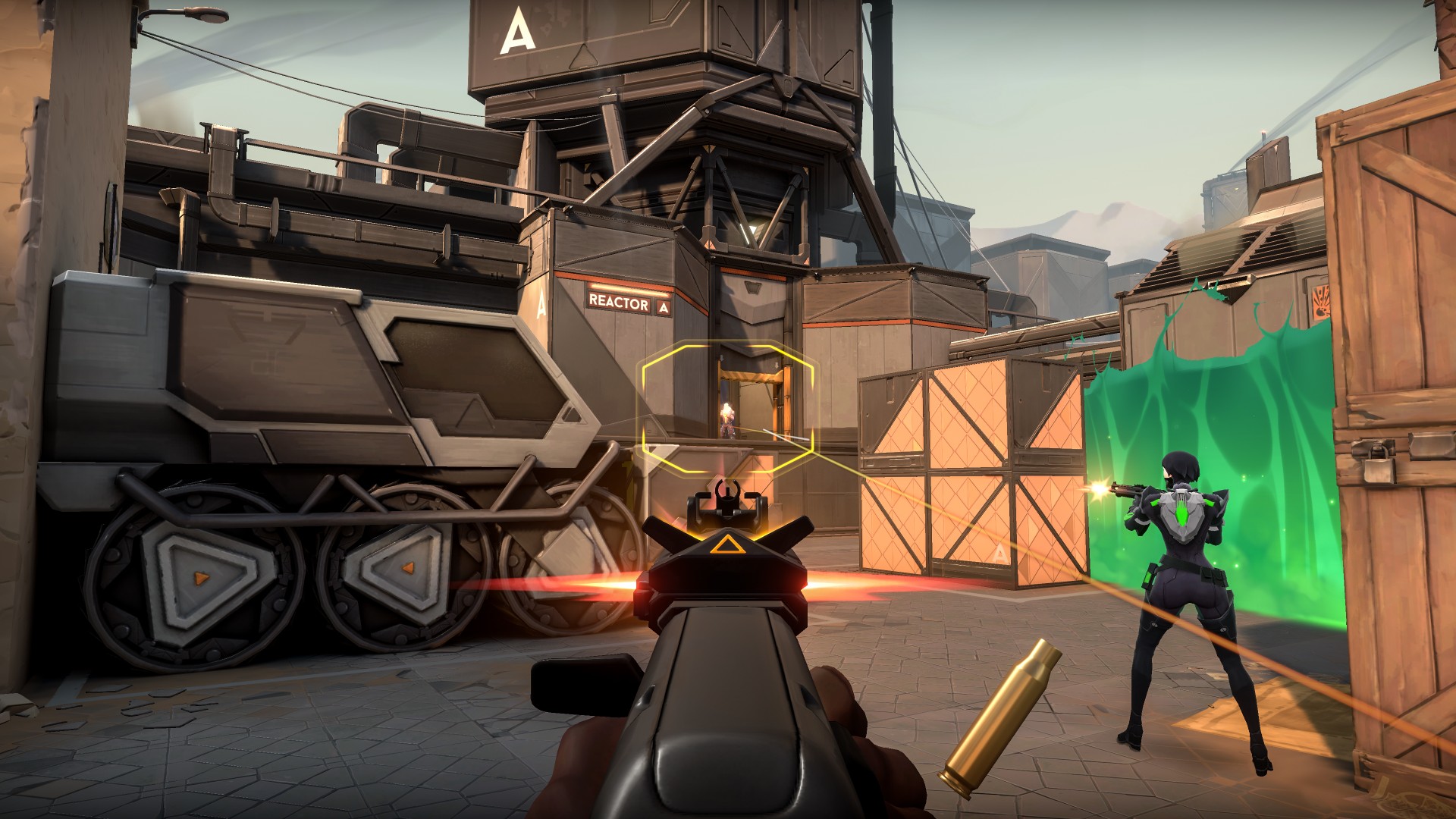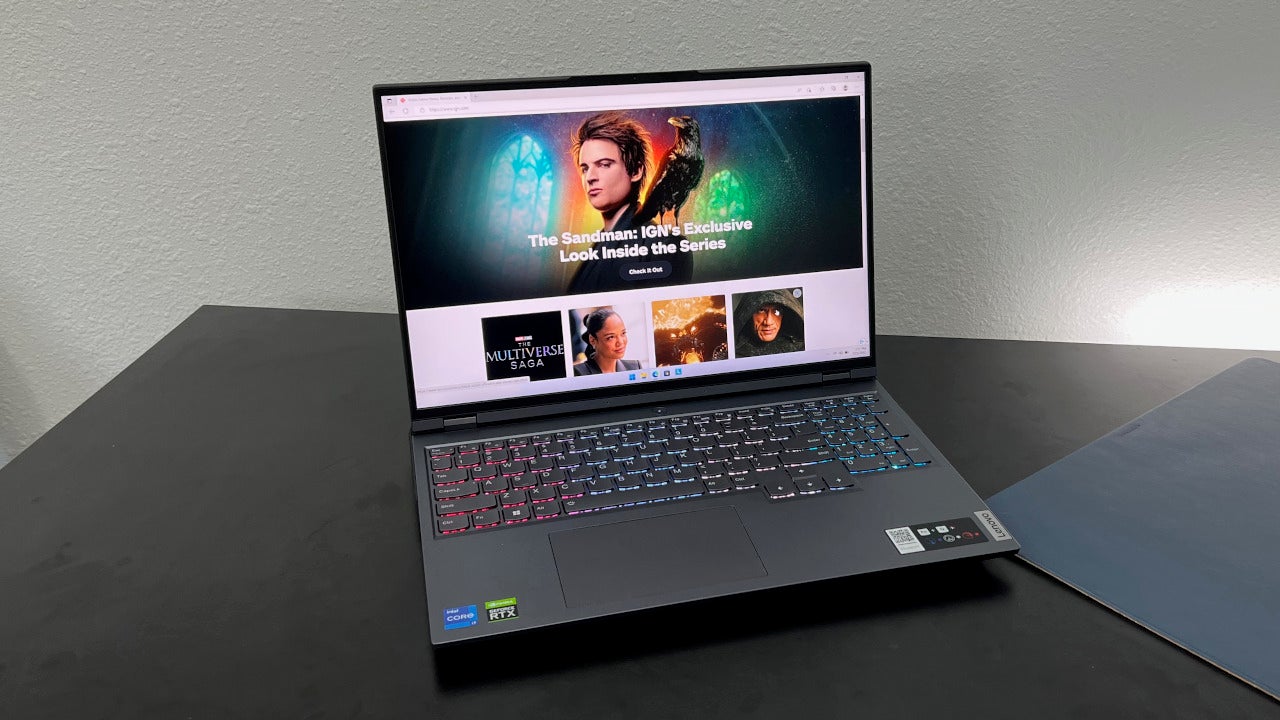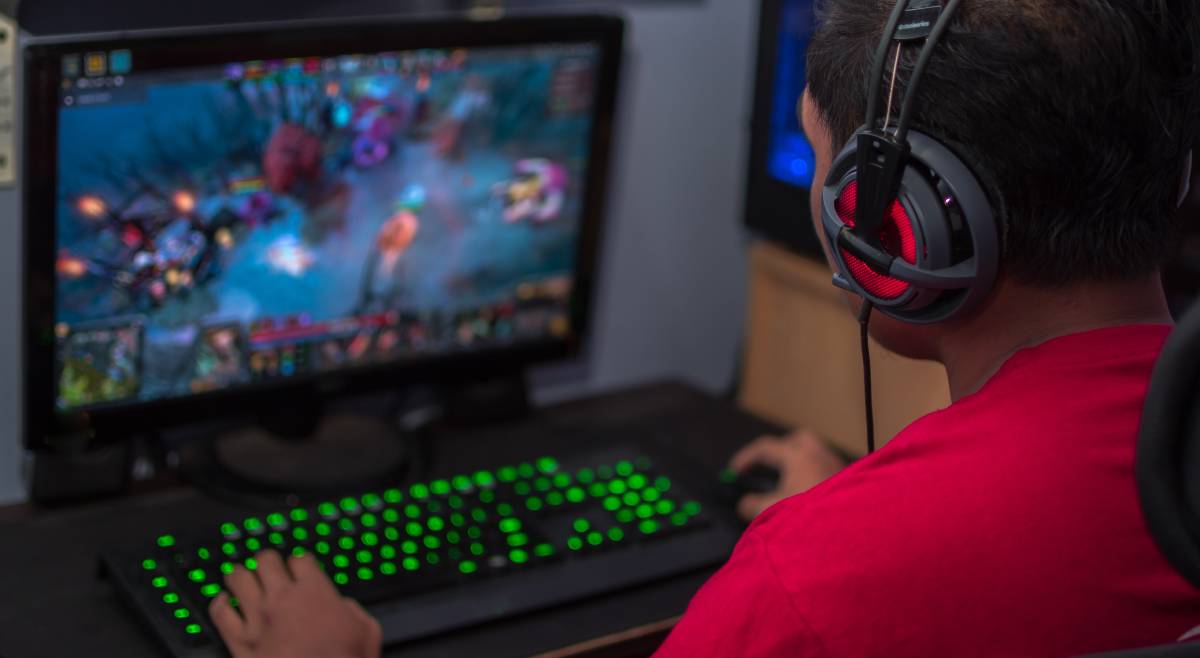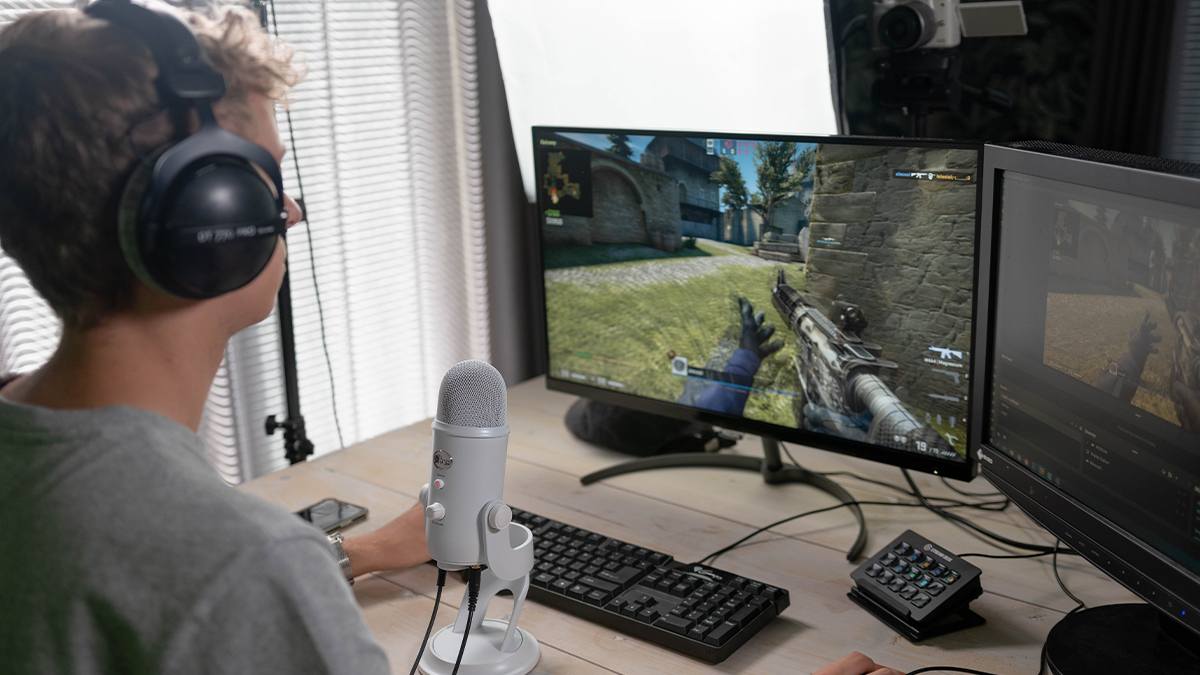Introduction
Online gaming has become a popular form of entertainment, attracting millions of gamers worldwide. Whether you’re engaged in intense first-person shooters or immersive multiplayer experiences, one crucial factor can greatly impact your gaming experience: frames per second (FPS). FPS measures the number of frames displayed per second, determining the smoothness and responsiveness of the game. In online gaming, where split-second reactions can make the difference between victory and defeat, having a high FPS is essential.
But what exactly affects FPS in online gaming? It goes beyond just having a powerful gaming rig. Several factors, both hardware and software-related, come into play and can influence the overall performance of your game. Understanding these factors and optimizing them can significantly enhance your gaming experience.
In this article, we will explore the various elements that can impact FPS in online gaming. From hardware requirements to graphics settings and network connection speed, we will delve into the key factors that determine how smoothly your game runs. We will also highlight some tips and tricks to boost FPS and address common issues that may hinder optimal performance. So, whether you’re a casual gamer or a hardcore enthusiast, read on to discover how you can optimize your gaming setup for a buttery-smooth gaming experience.
Definition and Importance of FPS in Online Gaming
Frames per second (FPS) is a crucial metric that measures the number of frames displayed on your screen per second. In online gaming, a higher FPS translates to smoother and more responsive gameplay, giving players a competitive edge. The importance of FPS cannot be overstated; it directly affects the gaming experience and can significantly impact gameplay performance.
When it comes to online gaming, every millisecond counts. A high FPS ensures that the actions you perform, such as shooting, moving, or reacting to opponents, are accurately displayed on the screen without delays or stutters. This real-time responsiveness is crucial, particularly in fast-paced games like first-person shooters, where split-second decisions can determine success or failure.
Moreover, a high FPS provides a more immersive and visually pleasing gaming experience. Fluid animations, smooth camera movements, and crisp visuals make the game feel more realistic and engaging. It allows players to fully enjoy the intricacies of game design, from stunning graphics to detailed character models and environments.
Low FPS, on the other hand, can be detrimental to online gaming. It can result in sluggish and unresponsive controls, making it difficult to execute precise moves or react quickly. Choppy animations and jerky movements can not only hinder gameplay but also disrupt the overall immersion, pulling players out of the gaming experience.
Additionally, low FPS can give opponents an advantage in multiplayer games. If your game is running at a lower FPS than your opponents, their actions will be displayed faster, giving them a split-second advantage in reacting to your moves. This imbalance can greatly impact competitive gameplay and put you at a disadvantage.
Therefore, understanding and optimizing your FPS is essential for online gaming. By ensuring a high FPS, you can elevate your gaming performance, enhance your overall experience, and level the playing field. In the following sections, we will explore the factors that influence FPS and delve into strategies to boost and optimize it for a seamless online gaming experience.
Hardware Requirements for Higher FPS
When it comes to achieving higher FPS in online gaming, having the right hardware is crucial. Your gaming rig needs to meet certain specifications to ensure smooth gameplay and optimal performance. Here are some key hardware components and requirements to consider:
- Processor (CPU): A powerful CPU is essential for online gaming. Look for processors with multiple cores and high clock speeds, as they can handle the demanding tasks of online games more efficiently. Popular choices include Intel Core i5 or i7 and AMD Ryzen CPUs.
- Graphics Card (GPU): The GPU plays a crucial role in rendering graphics and determining your FPS. Opt for a high-performance GPU with ample VRAM to handle the graphics-intensive demands of online games. Popular options include NVIDIA GeForce RTX series and AMD Radeon RX series.
- RAM (Memory): Sufficient RAM is necessary to ensure smooth gameplay. Aim for at least 8GB of RAM, though with more demanding games, 16GB or even 32GB can provide better performance.
- Storage: While storage doesn’t directly impact FPS, having a fast and ample storage solution can help reduce loading times and improve overall game performance. Consider using a solid-state drive (SSD) for quicker game installations and faster data access.
- Monitor: A high-refresh-rate monitor is ideal for achieving higher FPS. Look for monitors with a refresh rate of 144Hz or higher, as they can display more frames per second, resulting in a smoother and more responsive gaming experience.
It’s worth noting that while having top-of-the-line hardware is desirable, it doesn’t guarantee maximum FPS if other aspects of your setup are not optimized. The overall performance of your gaming system depends on the synergy between the CPU, GPU, RAM, and other components.
Furthermore, keeping your hardware up to date is essential. Regularly check for driver updates from the manufacturer’s website to ensure you’re running the latest versions. These updates often include optimizations and bug fixes that can improve gaming performance and FPS.
In the next sections, we will explore additional factors, such as graphics settings, network connection speed, and background processes, which can influence FPS in online gaming.
Graphics Settings and their Impact on FPS
Graphics settings play a crucial role in determining the FPS you can achieve in online gaming. By adjusting these settings, you can find the right balance between visual quality and performance. Here are some key graphics settings and their impact on FPS:
- Resolution: The resolution at which you play your game directly affects FPS. Higher resolutions, such as 1440p or 4K, require more processing power from your GPU, leading to lower FPS. If you’re looking to maximize FPS, consider lowering the resolution to 1080p.
- Texture Quality: Texture quality affects the level of detail and sharpness of in-game textures. Higher texture quality settings can decrease FPS, as they require more VRAM to render these detailed textures. Adjusting texture quality to medium or lower can help improve FPS without significant visual sacrifices.
- Shadow Quality: Shadows add depth and realism to the game, but they can also be demanding on your GPU. Turning down shadow quality or disabling shadows altogether can greatly improve FPS, especially in dynamic and visually complex scenes.
- Effects and Post-Processing: Effects like ambient occlusion, motion blur, and depth of field can enhance visual quality but come at a performance cost. Lowering or disabling these effects can boost FPS while still maintaining a visually appealing gaming experience.
- Anti-Aliasing: Anti-aliasing smooths jagged edges and enhances image quality. However, it can be taxing on GPU resources. Experiment with various anti-aliasing options, such as FXAA or MSAA, to find the balance between visual quality and performance.
It’s important to note that the impact of these graphics settings on FPS may vary depending on the game and your hardware capabilities. What works for one game may not yield the same results in another. Therefore, it’s recommended to adjust these settings based on your specific system’s capabilities and the game you’re playing.
Furthermore, some games provide predefined graphics presets (e.g., low, medium, high, ultra) that optimize the settings based on your hardware. Experimenting with these presets can help you find a good balance between visual quality and performance without manually adjusting each individual setting.
In the upcoming sections, we will explore other factors that can affect FPS, such as network connection speed, background processes, and overclocking techniques.
Network Connection Speed and its Effect on FPS
While hardware and graphics settings play a significant role in determining FPS, the quality and stability of your network connection can also impact your online gaming experience. A fast and reliable internet connection is essential for smooth gameplay and minimizing latency (or ping). Here’s how network connection speed can affect FPS:
Latency: Latency refers to the delay between your input and the response in the game. High latency can result in delays between your actions and their display on the screen, negatively impacting your gameplay performance. A stable and low-latency connection is crucial for achieving a responsive gaming experience with high FPS.
Bandwidth: Online gaming requires a certain amount of bandwidth to transmit and receive data. If your network connection lacks sufficient bandwidth, it can lead to increased latency, packet loss, and reduced FPS. Ensure that your internet plan provides enough bandwidth to support your gaming needs.
Connection Type: The type of connection you use can also impact your FPS. Wired connections, such as Ethernet, generally offer more stability and lower latency compared to wireless connections like Wi-Fi. If possible, consider connecting your gaming device directly to the router using an Ethernet cable to optimize network performance.
Network Congestion: Heavy network traffic and congestion can lead to increased latency and reduced FPS. This is especially true if you’re sharing your internet connection with multiple devices or if other users on your network are engaging in bandwidth-intensive activities. To minimize the impact of network congestion, prioritize your gaming traffic and consider using Quality of Service (QoS) settings on your router.
Server Location: Playing on servers that are located far away from your physical location can introduce additional latency and potentially affect your FPS. Whenever possible, choose servers that are geographically closer to you to minimize the distance your data needs to travel, resulting in lower latency and better FPS.
To optimize your network connection for gaming, it’s important to prioritize stability and low latency. This can be achieved by using a reliable internet service provider, ensuring proper router configuration, and minimizing network congestion. Regularly testing your internet speed and monitoring latency can help identify and troubleshoot any connection issues that may be affecting your FPS.
Next, we will explore the impact of background processes and applications on FPS, as well as techniques for overclocking to boost performance.
Background Processes and Applications
When it comes to optimizing FPS in online gaming, it’s not just about hardware and network settings. The background processes and applications running on your system can also impact gaming performance. Here’s how they can affect FPS:
Resource Consumption: Background processes and applications can consume valuable system resources, such as CPU usage, RAM, and disk I/O. These resources are critical for running your game smoothly. Having resource-intensive applications running in the background can lead to decreased FPS and overall system performance.
Update and Maintenance Tasks: Some applications and processes perform update checks, system scans, or maintenance tasks in the background. These tasks can cause temporary spikes in resource usage and impact FPS during gameplay. It’s important to schedule these tasks to occur during times when you’re not actively gaming.
Antivirus and Security Software: While antivirus and security software are essential for protecting your system, they can also impact gaming performance. These applications often perform real-time scans, which require significant system resources. Consider configuring your antivirus software to exclude gaming-related files and processes to minimize their impact on FPS.
Background Downloads and Uploads: Large downloads or uploads running in the background can consume bandwidth and cause network congestion, leading to increased latency and reduced FPS. Pause or schedule any background downloads or uploads to ensure optimal network performance during gaming sessions.
Closing Unnecessary Applications: Closing unnecessary applications and processes that are not essential for gaming can free up system resources and improve FPS. Check your system’s task manager or activity monitor to identify and close any resource-intensive applications that may be running in the background.
Game Optimizers and Management Tools: There are various game optimization and management tools available that can help streamline your gaming experience. These tools can help identify and close unnecessary background processes, optimize system settings, and improve overall performance. Consider using such tools to get the most out of your gaming setup.
By minimizing the impact of background processes and applications, you can ensure that your system’s resources are primarily dedicated to running your game, resulting in improved FPS and smoother gameplay.
In the next section, we will explore the concept of overclocking and how it can boost FPS in online gaming.
Overclocking and Boosting FPS
Overclocking refers to the process of increasing the clock speed of your hardware components, such as the CPU and GPU, beyond their default settings. This can result in higher performance and potentially boost FPS in online gaming. Here’s how overclocking can impact FPS:
CPU Overclocking: Overclocking your CPU can result in improved gaming performance and higher FPS. By increasing the clock speed, you can enhance the processing power of your CPU, allowing it to handle game tasks more efficiently. However, it’s important to keep in mind that overclocking should be done cautiously, as it can generate more heat and may require additional cooling solutions.
GPU Overclocking: Overclocking your GPU can also have a significant impact on FPS. Increasing the GPU’s clock speed and memory frequency can improve its ability to render graphics, resulting in smoother gameplay. Like CPU overclocking, it’s important to consider the temperature and stability of your GPU when pushing its limits.
Memory Overclocking: Overclocking your RAM can enhance memory bandwidth and access speed, benefiting overall system performance and potentially boosting FPS. However, the impact of RAM overclocking on FPS is typically less significant compared to CPU and GPU overclocking.
It’s important to note that overclocking carries certain risks. Pushing your hardware beyond its manufacturer-recommended limits can increase heat generation and potentially reduce the lifespan of your components. Therefore, proper cooling solutions, such as aftermarket CPU coolers and sufficient case airflow, are essential when overclocking.
To overclock your hardware, you will typically need to access the BIOS/UEFI settings of your motherboard or use dedicated software provided by the component manufacturer. It’s recommended to refer to official documentation and guides specific to your hardware to ensure safe and effective overclocking.
Keep in mind that not all hardware components can be overclocked, and the extent to which you can push their performance may vary. Additionally, stability testing and monitoring tools can help you ensure the overclocked settings are reliable and do not cause system instability or crashes.
While overclocking can yield significant performance improvements, it’s not a guaranteed solution to boosting FPS. Factors such as hardware limitations, game optimization, and other system settings also contribute to overall performance in online gaming. Experimentation and finding the right balance between performance and stability are key when attempting to overclock your hardware.
In the closing thoughts section, we will summarize the key concepts discussed and provide a final takeaway on optimizing FPS in online gaming.
Updating Drivers for Optimal Performance
Updating your drivers is essential for maintaining optimal performance in online gaming. Drivers are software that facilitate communication between the operating system and your hardware components. Outdated drivers can lead to compatibility issues, decreased performance, and potential FPS drops. Here’s why updating drivers is important:
Performance Enhancements: Driver updates often include performance optimizations. Graphics card drivers, for example, may introduce specific enhancements for gaming, allowing your GPU to better handle the demands of modern titles. By keeping your drivers up to date, you can ensure that your hardware is running at its full potential, resulting in improved FPS and smoother gameplay.
Bug Fixes and Stability: Driver updates also address known issues and bugs that may affect gaming performance. These updates can provide stability improvements, preventing crashes, freezes, and other system instabilities that can impact FPS and overall gaming experience. By regularly updating your drivers, you can mitigate potential problems and ensure a smoother gaming experience.
Compatibility with New Games: New games often come with specific hardware requirements and optimizations. Updating your drivers ensures that your hardware is compatible with these latest titles and can take advantage of their performance-enhancing features. This ensures that you can enjoy the best possible gaming experience with optimal FPS.
To update your drivers, you can visit the official website of your hardware manufacturer and look for driver downloads specific to your device model and operating system. Graphics card manufacturers usually provide dedicated software that makes it convenient to check for and install the latest graphics drivers.
When updating drivers, it’s advisable to create a system restore point or backup your important files to mitigate any potential risks or compatibility issues that may arise. In some cases, newly updated drivers may introduce unforeseen issues, and reverting to a previous version can help troubleshoot such problems.
Regularly checking for driver updates and keeping your system up to date ensures that you’re getting the best performance and compatibility from your hardware. It’s recommended to schedule periodic driver updates or enable automatic updates to stay on top of the latest releases and improvements.
By updating drivers, you can maximize your gaming performance, optimize FPS, and ensure a seamless and enjoyable online gaming experience.
In the closing thoughts section, we will summarize the key concepts discussed and provide a final takeaway on optimizing FPS in online gaming.
Heat and its impact on FPS
Heat management is often an overlooked aspect but crucial for maintaining optimal performance and FPS in online gaming. Excessive heat can have a detrimental impact on your hardware’s performance, potentially causing thermal throttling and decreased FPS. Here’s how heat can affect your gaming experience:
Thermal Throttling: As your hardware components, such as the CPU and GPU, generate heat during gameplay, they rely on cooling solutions to dissipate it. If the temperature exceeds safe limits, the components may automatically reduce their clock speeds to prevent damage. This phenomenon is known as thermal throttling and can result in lower FPS and decreased performance.
Reduced Lifespan: Consistently operating your hardware at high temperatures can decrease its lifespan. Over time, excessive heat can degrade electronic components, leading to hardware failures and decreased overall performance. It’s important to keep your hardware temperatures within safe limits to ensure longevity and avoid performance degradation.
CPU and GPU Boost: Many modern CPUs and GPUs feature boost technologies that increase their clock speeds when they operate within specified temperature ranges. Keeping temperatures lower can help these boost technologies work at their maximum potential, resulting in higher FPS and improved gaming performance.
To manage heat effectively, consider the following tips:
- Adequate Cooling: Ensure your gaming system has sufficient cooling, including fans, heatsinks, and, if necessary, liquid cooling solutions. Proper airflow within your case can help dissipate heat effectively.
- Cleanliness: Regularly clean dust and debris from your system, especially around cooling components like fans and heatsinks. Dust buildup restricts airflow, leading to higher temperatures and reduced cooling efficiency.
- Optimize Fan Speeds: Adjusting the fan speeds can help maintain lower temperatures during intense gaming sessions. Many motherboards or software utilities provide fan control options to customize fan curves based on temperature thresholds.
- Location and Airflow: Ensure that your gaming setup is located in a well-ventilated area and not enclosed within tight spaces. Proper airflow around your system can significantly aid in heat dissipation.
- Thermal Paste and Cooling Contact: Periodically check and if needed, replace the thermal paste between your CPU/GPU and heatsink. Proper contact between the components ensures efficient heat transfer.
Monitoring your hardware temperatures in real-time using software utilities can help identify potential issues and determine if your cooling setup is adequate. If your temperatures consistently reach high levels even after optimizing cooling, you may consider investing in more powerful cooling solutions.
By effectively managing heat and ensuring optimal operating temperatures, you can maintain consistent FPS, improve hardware longevity, and enhance your overall online gaming experience.
In the closing thoughts section, we will summarize the key concepts discussed and provide a final takeaway on optimizing FPS in online gaming.
Closing Thoughts
Optimizing FPS in online gaming requires a holistic approach that encompasses hardware, software, and network configurations. By understanding the factors that affect FPS and implementing the right strategies, you can elevate your gaming experience and enjoy smoother gameplay. Here are some essential takeaways:
Firstly, ensure that your hardware meets the recommended requirements for the games you play. Pay attention to your processor, graphics card, RAM, storage, and monitor. Upgrading or optimizing these components can greatly improve FPS.
Graphics settings play a significant role in determining FPS. Experiment with different settings to find the right balance between visual quality and performance. Adjusting resolution, texture quality, shadows, effects, and anti-aliasing can significantly impact FPS.
Network connection speed and stability are crucial for online gaming. Minimize latency and ensure sufficient bandwidth to reduce lags and improve responsiveness. Consider using wired connections, prioritizing gaming traffic, and choosing servers closer to your location.
Background processes and applications can consume valuable system resources and impact FPS. Close unnecessary apps, maintain a clean system, and use game optimization tools to free up resources and improve performance.
Overclocking your hardware, when done cautiously, can provide performance boosts and increase FPS. However, it’s important to monitor temperatures and stability during the process to prevent hardware damage.
Keeping your drivers up to date is vital for optimal performance. Regularly check for driver updates and install them to benefit from performance enhancements, bug fixes, and compatibility improvements.
Last but not least, managing heat is essential. Proper cooling, cleanliness, fan speed optimization, and monitoring temperatures can prevent thermal throttling, extend hardware lifespan, and maintain consistent FPS.
By implementing these strategies, you can enhance your FPS in online gaming, ensuring a seamless and enjoyable gaming experience. Remember, optimization is a continuous process, so regularly monitor and tweak your settings to stay ahead of the game.
Now, armed with these insights, go maximize your FPS, dive into the immersive world of online gaming, and enjoy the thrill of seamless and responsive gameplay.







